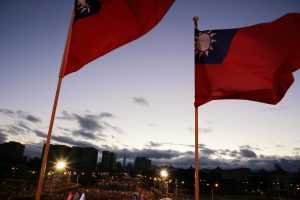TAIPEI – Ever since it became apparent that a new strain of coronavirus originating from Wuhan, China, was a serious public health challenge, Taiwan was on alert. Now, well into the Asian epidemic around the novel coronavirus, or COVID-19, Taiwan has managed to successfully contain the spread of the disease, placing it in sharp contrast with East Asian neighbors China, Japan, and South Korea.
As of Tuesday, March 3, Taiwan had reported just 42 cases of COVID-19. To date, Taiwan has not experienced any community outbreaks of the highly contagious virus. Apart from a cluster outbreak in north Taiwan, the disease’s spread has been limited to date.
A major part of Taiwan’s preventive effort has been its ability to successfully tamp down on travelers coming to the island and requiring quarantines for Taiwanese nationals with travel histories to mainland China, Hong Kong, and Macau.
Beginning on February 6, Taiwanese authorities imposed a mandatory self-quarantine requirement for Taiwanese nationals who had traveled to those places, with particular attention given to anyone that had been to the Chinese provinces of Hubei (the epicenter of the COVID-19 outbreak), Guangdong, Zhejiang, and Henan.
Starting February 7, foreign nationals who had been to mainland China, Hong Kong, and Macau were temporarily barred from visiting Taiwan as well. Beginning on February 10, Taiwanese authorities extended the provisions to apply to foreign nationals who had also been in transit through China, requiring them to undergo a 14-day home quarantine after entering Taiwan.
On February 11, Taiwanese authorities increased monitoring of all international arrivals onto the island, requiring all arriving visitors to sign and complete a health declaration. After separate COVID-19 outbreaks in South Korea, Iran, and Italy, the Taiwanese declaration form asked about travel to these places within the past 14 days. Additionally, the form asked travelers if they had experienced any symptoms that might be indicative of a COVID-19 infection.
Taiwan’s relatively compact island geography has allowed it to successfully control inbound visitors. Taipei has taken certain wide-ranging measures, including a total ban on all port calls in Taiwan by international cruise ships starting February 6.
More dramatically, starting February 10, Taiwanese authorities have only permitted mainland China flights originating in Beijing Capital International Airport, Shanghai Pudong International Airport, Shanghai Hongqiao International Airport, Xiamen Gaoqi International Airport, and Chengu Shuangliu International Airport to land in Taiwan. Any flights that had been scheduled to Taiwan from other Chinese airports have been prohibited through April 29.
The Diplomat learned that the total flight passenger volume between mainland China and Taiwan has dropped dramatically, with a total reduction in flight count of 88 percent and a total reduction in travelers of 92 percent. A similar reduction has taken place in flight passenger volume between Taiwan and Hong Kong and Macau.
According to official Taiwanese statistics, total arrivals to Taiwan from mainland China dropped from around 12,000 per day before the Lunar New Year holiday to just 500 per day since February 18, all through the five airports listed above.
Taiwanese authorities continue to monitor the COVID-19 situation in China and will adjust measures taken to date as the situation changes.
While public health efforts in Taiwan have been mostly effective in limiting the spread of COVID-19 locally, Taiwanese authorities express concern about active disinformation efforts seeking to insinuate that the spread of the virus is unchecked in Taiwanese society. To counter these efforts, Taiwan’s national FactCheck Center has made messaging on COVID-19 a priority in recent weeks.

































